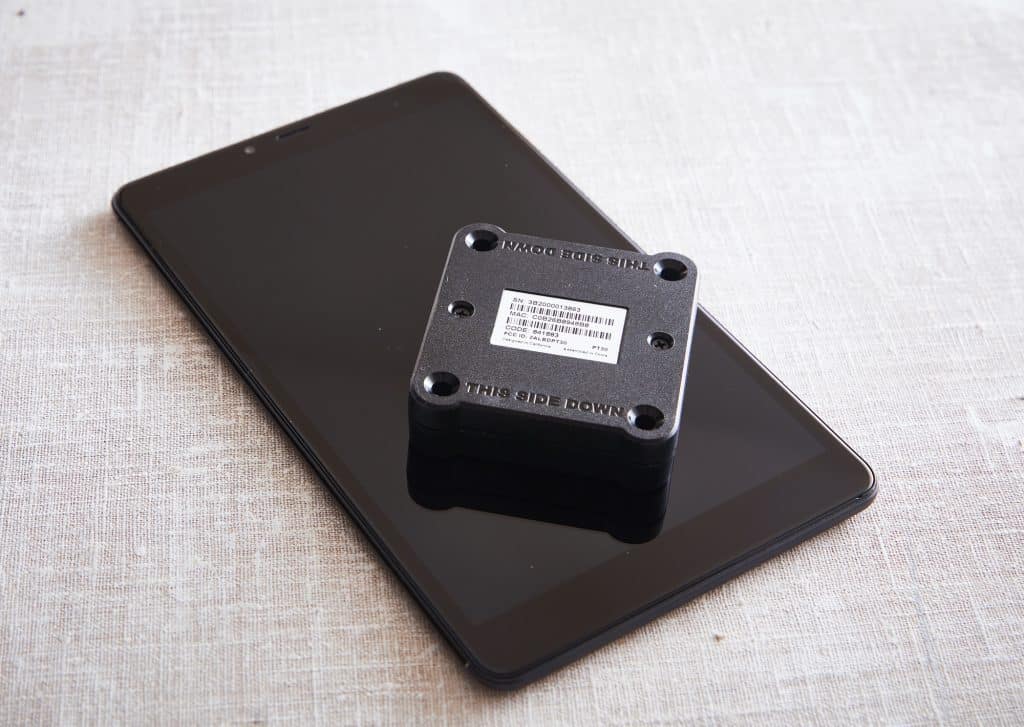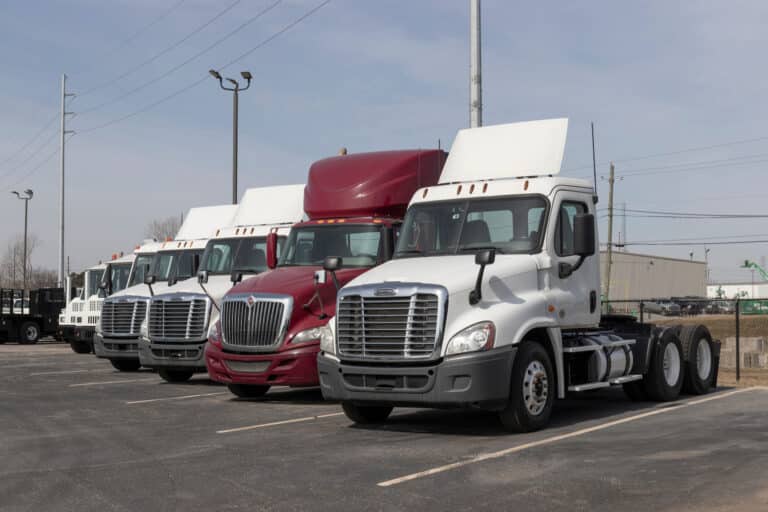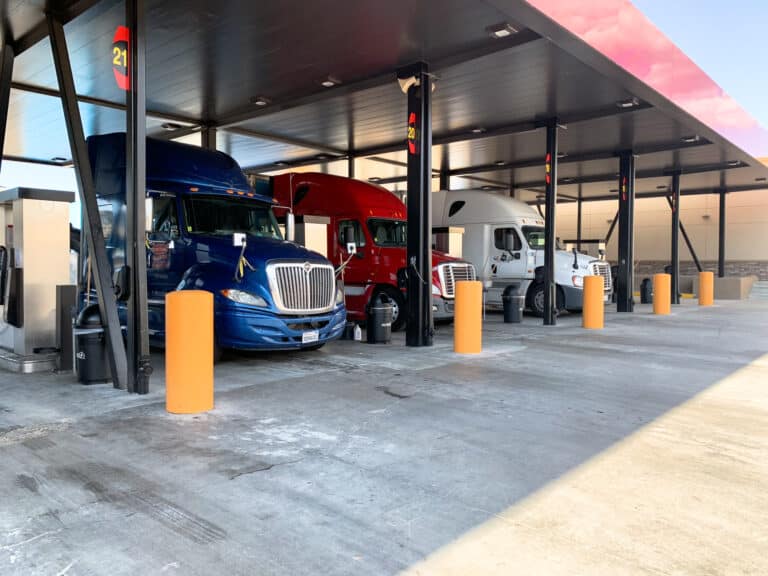HOS247 is a top-rated, highly trusted company that creates solutions to help drivers meet Federal Motor Carrier Safety Administration (FMCSA) compliance. In addition to offering the best ELD solutions for small fleets, HOS247 offers dedicated support to help keep fleets safe and productive.
Benefits of HOS247
Carriers that choose HOS247 for their ELD fleet apps can benefit from the following advantages:
- The simplicity of a fleet complete ELD that’s easy to use and rated highly by fleet managers and their drivers
- Hardware that installs in a matter of minutes, as well as the capability to easily connect a smartphone or tablet via a Bluetooth connection or USB port
- A dedicated support team that speaks multiple languages
- No need to commit to any contracts
- Ability to change plans at any time in order to meet the growing needs of your fleet
- Hassle-free returns within two weeks of purchase, letting fleets try out the product before making a final decision
- Dispatch features to help a fleet run more efficiently and safely
- Customizable plans to suit a fleet of any size
- Ability to ensure that every vehicle in the fleet is safe with electronic driver-vehicle inspection reports (DVIRs) that are easy to both create and edit
Do you have any questions? Talk to ELD Advisor: 650-405-3372 or Request Callback
HOS247 Effortlessly Helps Small Fleets Meet Compliance Requirements
The HOS247 ELDs for small fleets help drivers and managers meet all of the FMCSA’s ELD compliance requirements. The small fleet ELDs also help drivers easily figure out whether they meet any of the four hours of service (HOS) exceptions at any given time. Those four HOS exceptions are listed below.
The 30-Minute Break Exception
Under the 30-minute break rule, drivers are required to take a break that lasts 30 consecutive minutes after they drive for eight hours, but only if they are driving (not fueling or loading cargo, for example). Failing to take a 30-minute break before resuming their driving assignment could cost them an HOS violation unless the driver is a short-haul driver who:
- Qualifies for the 100 air-mile radius provision
- Qualifies for the 150 air-mile radius provision and who operate a non-CDL vehicle
The 16-Hour Short-Haul Exception
Under this exception, a property-carrying driver can extend their driving window by two hours (from 14 hours to 16 hours) once every period of seven consecutive days if they:
- Are back at the same reporting location they were released from during the previous five shifts
- Are back are released of duty within 16 hours of coming on duty, and after spending 10 consecutive hours off duty
- Haven’t taken this exception at all within the previous six consecutive days, unless they used the 34-hour break to start their week
Note: A driver who uses this exception has 16 hours to complete their work but still cannot drive longer than 11 hours.

The Adverse Driving Conditions Exception
If a driver had no way to anticipate adverse driving conditions before they began their route, they could extend their driving limit by two hours under the Adverse Driving Conditions Exception. Unforeseen changes in weather and road closures are examples of when this exception would apply. However, if a weather condition was forecasted or if there was a traffic delay that fell under a regular pattern (like rush hour), those examples would not meet this exception.
A property-carrying driver who is allowed to drive a maximum of 11 hours per shift (maximum), would be allowed to lengthen their shift to 13 hours under this exception. However, all 13 hours must be completed within a 14-hour window.
Similarly, a driver who carries passengers and is allowed to drive a maximum of 10 hours per shift can extend their shift to 12 hours under this exception. The driver would not have to extend their 15-hour driving period, however.
The Direct Emergency Assistance Exception
When an emergency is declared by the FMCSA, or the federal or state governments (or both), HOS regulations may need to be lifted temporarily for drivers. If the state or federal government acknowledges and announces the emergency, drivers can complete their shift without violating FMCSA regulations, providing that their route could have been completed had there not been an emergency. More information on active emergency declarations and the states that declare them can be found on the FMCSA’s website.
The HOS247 ELD fleet app makes it easy for drivers to use these exceptions without manually keeping track of them.
Tips for Choosing the Right ELD for Small Fleets
Now that the ELD mandate is being enforced, drivers who are not exempt yet are driving without an ELD fleet app risk being put out-of-service if caught by enforcement officials. If you’re still looking for an ELD for your fleet or just getting started in the trucking industry, here are some tips for choosing the right ELD for small fleets so you can stay compliant with FMCSA and DOT regulations.
- Check the FMCSA’s ELD registration list. The list is made of vendors who claim to sell ELDs that meet FMCSA requirements. In other words, they are self-certified and not endorsed by the FMCSA. Although being mentioned on this list does not guarantee that the vendors that make ELDs are FMCSA-compliant, you can use this list as a starting point when researching ELDs.
- Check the FMCSA’s checklist titled “Choosing an Electronic Logging Device.” When narrowing your options for an ELD provider, ask them whether they deliver on each point of the checklist. If they don’t meet every point on the checklist, continue your search.
- Look for these key features that all small fleet ELD providers should offer:
- Reviews that are written by verified users and on neutral platforms (e.g., Apple Store and Google Play)
- The ability for drivers and fleet managers to use the ELD without extensive training
- Support from real people 7 days per week
- Watch for these red flags when choosing an ELD:
- Custom hardware created by providers for drivers often locks you into their ecosystem and costs a lot of money upfront. Instead, choose a solution that works with smartphones and tablets for optimal flexibility.
- Companies that require you to sign a contract will lock you into a deal of often three or five years before you’ve even had a chance to try out the system. Any contract longer than a year is a sign that the provider lacks confidence in their ELD, and you should too.
- New providers that weren’t around over two years ago should be considered cautiously. You have to ask yourself whether they’ll be around long-term or will they leave you stranded without a reliable solution, risking getting into trouble with the FMCSA or DOT.
Realize that ELDs for small fleets aren’t all created equally. Some providers have rushed into production of ELDs without caring whether they are actually compliant. As such, they cut corners where it counts, leaving customers with ELDs that are complicated and noncompliant, and with no support when they have questions.
Do you have any questions? Talk to ELD Advisor: 650-405-3372 or Request Callback
Additional Features Besides ELD Capabilities That Can Help Small Fleets
It isn’t just ELD that small fleets need in order to be successful and meet HOS and RODs compliance. Look for a provider that offers other features to make your fleet run efficiently, safely and in compliance. HOS247 offers features in addition to their highly rated ELDs, including:
- Real-time GPS gives fleet managers and dispatchers a real-time, accurate account of where every vehicle is located on their route. As such, it is easier to plan routes, change routes and track how much longer drivers have left on their routes. The HOS247 ELD system can also help fleet managers schedule vehicle maintenance to ensure that no vehicles are overlooked and at risk of breakdowns.
- Automated IFTA mileage with the HOS247 ELD app eliminates the need for drivers to track mileage manually. The app calculates the distance traveled automatically. As such, the risk of human error is eliminated, and there is less administrative work to be performed. do the math for you: from distance traveled by jurisdiction to fuel purchases for all vehicles and more.
Dispatch is an important component of fleet management, but matching the right driver to the right job can be a cumbersome process that takes up a lot of unnecessary time considering it can be done more easily and efficiently with the HOS247 ELD app for small fleets. The dispatch features make it easy to assign jobs to the drivers who are suited best for a specific project within seconds. For example, if there is an urgent project that arises, a dispatcher can assign it to the driver who is closest to the pickup point at that given moment, instead of wasting time calling drivers and guessing as to what time they can pick up and deliver the asset. I can also provide a big picture of what jobs still have to be assigned and what jobs are still in progress.

I’ve co-founded, built and managed several transportation-related businesses. Now, I’m a founder and CEO of HOS247 – an AI Transportation Platform for trucking companies, freight brokers and other logistics operations. We are transitioning old-style operations to technology-advanced logistics entities and help them to grow their businesses. ELDs (electronic logging devices), fleet tracking and management 2.0 combined with AI-powered dispatch tools.












GPS fleet trackers allow managers in Canada to monitor vehicle locations and other relevant data to identify efficiency gaps, streamline operations, and increase productivity. Tracking devices, also known as automatic vehicle locators, capture real-time data using telematics technology, including GPS

The Canadian ELD mandate final compliance phase is now almost in effect, but many trucking companies are stuck with outdated legacy providers and still have yet to make a move on the right compliance partner. They may not know whether

According to the ELD mandate, published in the Canada Gazette and enforced by Transport Canada, commercial vehicle drivers must use approved electronic logging devices instead of paper logs to keep records of duty status come January 1, 2023. This includes